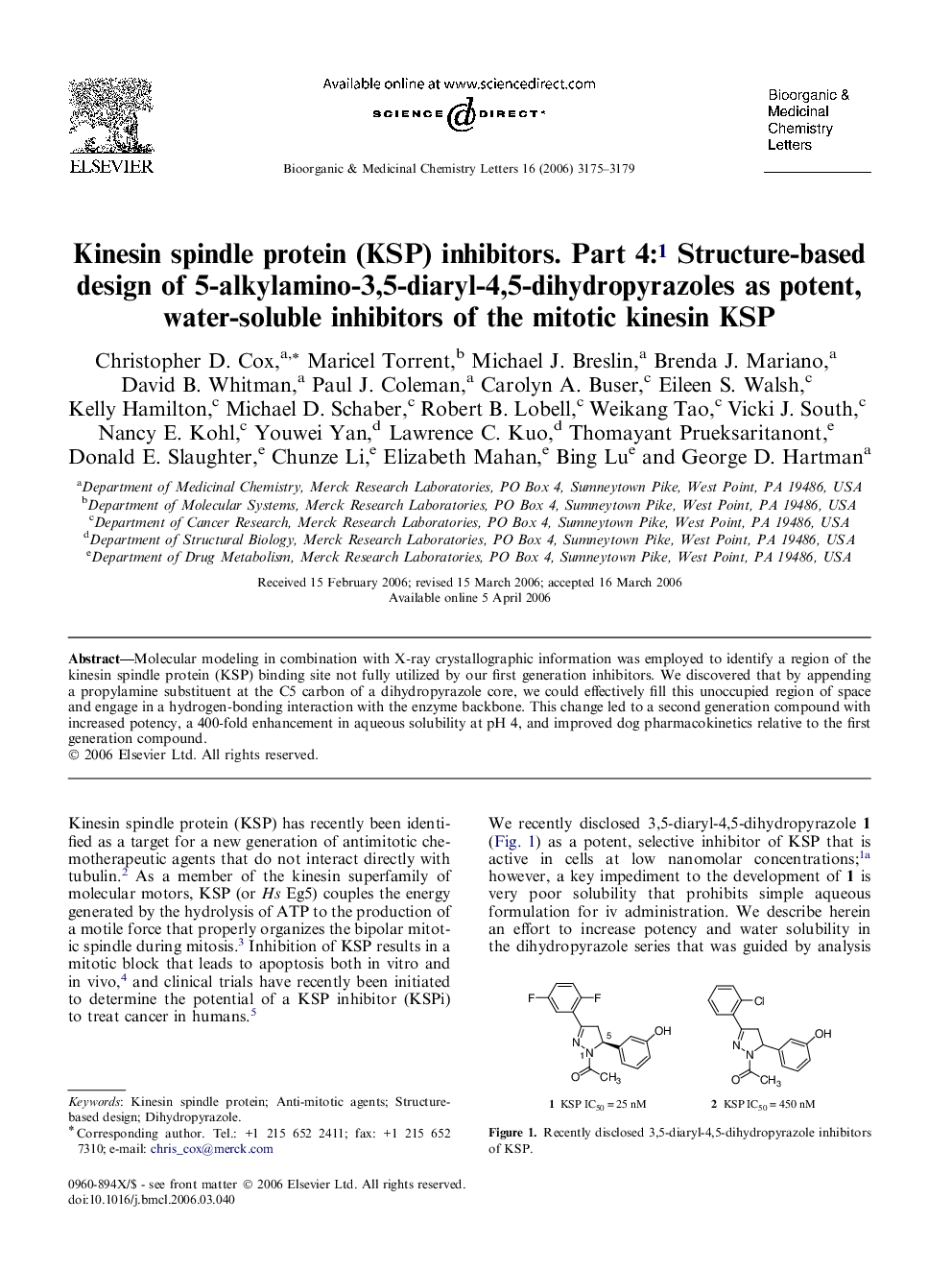| Article ID | Journal | Published Year | Pages | File Type |
|---|---|---|---|---|
| 1377465 | Bioorganic & Medicinal Chemistry Letters | 2006 | 5 Pages |
Molecular modeling in combination with X-ray crystallographic information was employed to identify a region of the kinesin spindle protein (KSP) binding site not fully utilized by our first generation inhibitors. We discovered that by appending a propylamine substituent at the C5 carbon of a dihydropyrazole core, we could effectively fill this unoccupied region of space and engage in a hydrogen-bonding interaction with the enzyme backbone. This change led to a second generation compound with increased potency, a 400-fold enhancement in aqueous solubility at pH 4, and improved dog pharmacokinetics relative to the first generation compound.
Graphical abstractA successful effort was undertaken to improve potency and solubility in a class of anti-mitotic agents that was guided by computer-generated structural models of an inhibitor–enzyme complex.Figure optionsDownload full-size imageDownload as PowerPoint slide
